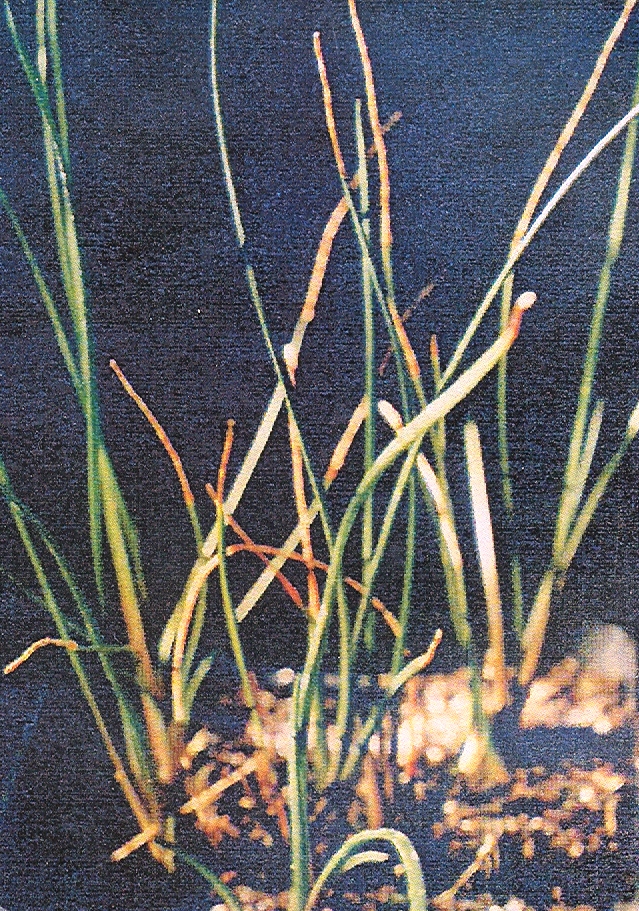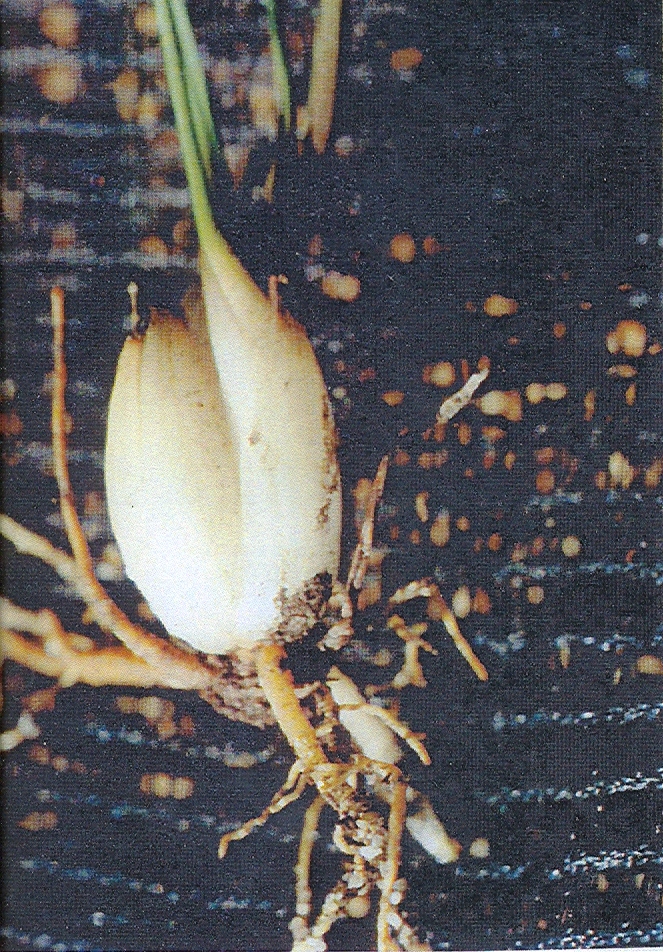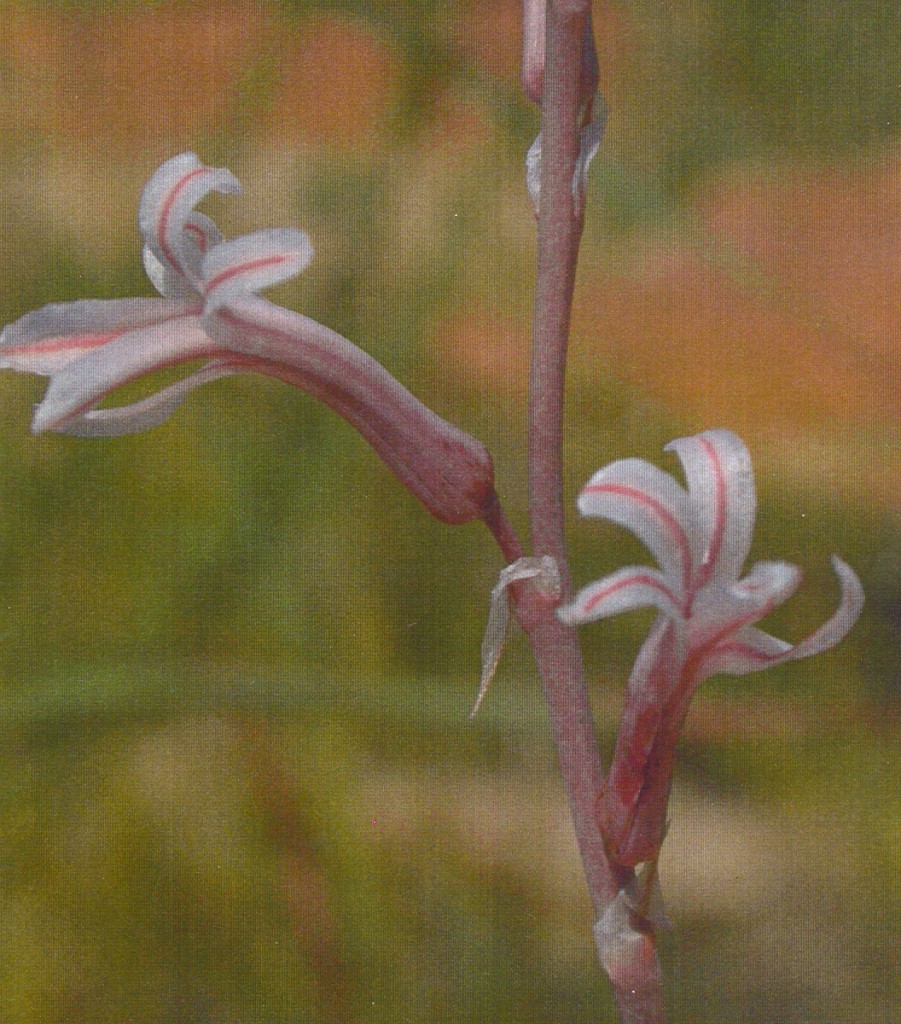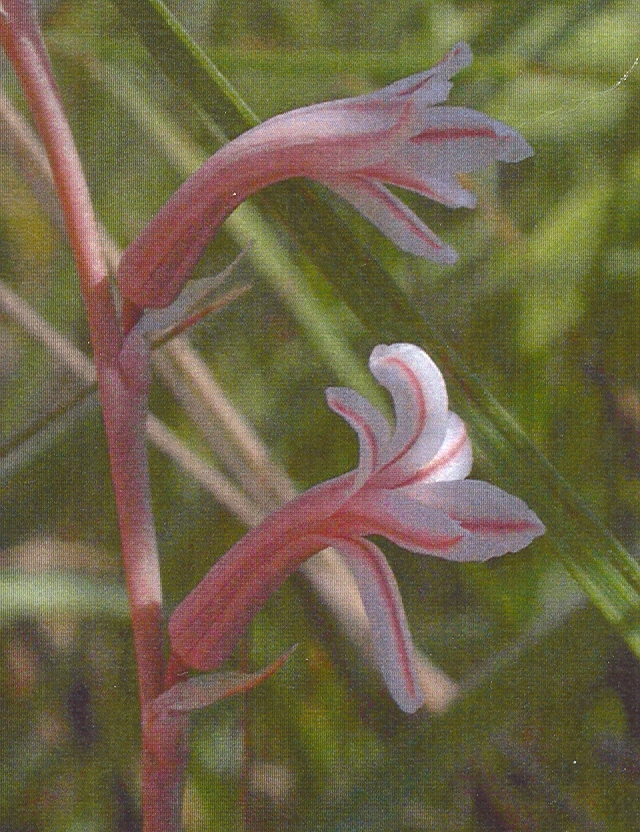This essay was published in Alsterworthia International Special Issue No. 4.
My fascination with Haworthia has presented me with many problems in the way the genera in the Alooideae have been discussed, appraised and modified in and subsequent to G.D.Rowley’s analysis (1967). Parr (1971) coalesced Astroloba, Haworthia and Poellnitzia and I refuted this in 1972 when I also wrote a rebuttal of Rowley’s paper. My remarks did not deter Mrs Obermeyer-Mauve (1973) following and accepting Parr, nor in adding Chortolirion to Haworthia. Rowley (1976) quite pragmatically discussed the Aloid genera, but in 1980 suggested the incorporation of Poellnitzia in Aloe. He implemented this proposal in 1981 and promoted it again in 1985. Smith and van Wyk (1991) published a cladistic analysis of the Alooideae which I felt was unacceptable because of the fallacious character states and sets that were used there. Despite that paper and at least four others (Smith 1991, 1994, 1995; Smith & van Wyk 1992) generally supporting the uni-specific status of Poellnitzia, Manning and Smith (2000) incorporated the genus in Astroloba.
My objection to this manipulation of the genera is that the supporting arguments have been incorrect and that it essentially has not addressed or considered what I perceived to be the stumbling block to arriving at a better delimitation of the genera in the sub-family. This is the relationship within the genus Haworthia where it is quite evident to me that it comprises three distinct sets of species (the subgenera of Bayer ex Uitewaal). The floral and morphological differences for those three sets are absolute, and I am sure will need to be seen so in any way in which Aloe is configured. This is because the floral similarities within those subgenera are so minimal. I consider these floral differences to be as dramatic for genus delimitation as any of the character states covered in Rowley’s (1967) analysis. It would alarm me if the result of a DNA study produced any other result. The sets also appear to me to “behaviourally” different and with this consideration the genera (even if unispecific) Poellnitzia, Chortolirion, Astroloba are of similar status. This is not to imply that I do not recognise the problems with many other oddities in the Alooideae which require re-evaluation of the generic arrangement.
Adam Harrower of NBI asked me to identify an Haworthia he had collected near the Potberg (cf.H. heidelbergensis). In view of his interest I asked him to lookout for H. limifolia on a trip he was to undertake to the eastern Transvaal. On his return he presented to me a plant he took to be that species. It was in fact Chortolirion angolense. However, he produced photographs of another species at which I exclaimed “This is a new genus”, but probably a Chortolirion.. Here I recognise the irony of this reaction when the generic arrangement in Aloe is so questionable.
The plant that Harrower collected has thin slender spineless hyacynthoid leaves (fig.1) with very pronounced bulbous bases. There seem to be few accumulated dry bulb scales as in Chortolirion and the plants have not displayed deciduousness as does that species. The older leaves blades dehisce leaving fleshy bulbous base and these are spirally arranged in the lowest order of the Fabonacci series viz. 2, 3 or 5 (fig.2). The roots seem rather sparse and are the yellowish colour of Aloe. The flower intrigues me more (figs 3 & 4). The free terminal portions of the flower are not channeled but are flared in the style of the sub-genus Haworthia. The midribs of the inner petals remain exposed and the margins of the outer petals adhere close to the mid-rib of the inner. This is the case in the subgenus Hexangulares and Chortolirion, as well as in this “new genus”. The lower petals are more undershot than is the case in either the Hexangulares or subgenus Haworthia.

Fig. 1. ADH Chortolirion sp. nov. 
Fig. 2. ADH Chortolirion sp. nov. 
Fig. 3. ADH Chortolirion sp. nov. 
Fig. 4. ADH Chortolirion sp. nov.
The geographical location is the high-lying escarpment between the ranges of the species H. koelmanniorum and H. limifolia of the Haworthia subgenus Hexangulares.
Why I have stated so categorically that this is a “new genus”, is largely because of the historical maltreatment of the genera of Alooideae and the failure of students and commentators of Haworthia to exhibit any rational species concept. Such a concept appears to be missing for the genera as well. What has troubled me in recent times is the emerging belief that molecular study will provide the basis for a real and irrefutable phylogenetic classification. We have now a paper Phylogenic relationships in Asphodelaceae Taxon 52:193 (2003) by Treutlein et al, which will enable one to see to what extent these expectations are being met.
What strikes me immediately about the paper is firstly a statement in the abstract, and secondly the unfortunate selection of study material. The abstract summaries the results of the work done and this is: “The current taxonomic system does not reflect the phylogenetic affinities and relationships among the succulent genera Aloe, Chortolirion, Gasteria, Haworthia and Poellnitzia.” I find this extraordinary, as it has never occurred to me that it did, and I would have expected this sentence worded in such a way to form a key question to be answered by the study rather than as a conclusion. Similarly Treutlein’s closing paragraphs of his discussion should have been used as key questions to be answered by the study and not have been derived from it. One sentence reads “complete sampling..needed”.
The selection of material I take to be somewhat irresponsible given the past history of classification of the group and the literature. I would have expected some kind of predictive approach to the selection of material. The inclusion of unknown hybrids such as H. ryderiana, H. kewensis, and H. icosiphylla can tell us nothing. Ignorance of the actual taxonomic position of H. geraldii is similarly curious. The material is virtually entirely ex hortus and given my experience with identification; even voucher specimens are hardly likely give such material much credibility. I do think more thought and consideration should have been given to the species used in relation to the problems they present to their classification.
Putting these considerations aside, I would comment as follows on the results as presented primarily in Treutlein et al‘sine fig 4. It does tell me what I had supposed ie. subgenus Haworthia is very different from the other two subgenera of Haworthia. BUT H. geraldii (ie retusa) is grouped with H. attenuata and H. glauca and close to Gasteria! It is a result which does not make sense. The true H. geraldii is H. retusa and that is arguably an ecotype of H. turgida as much as it is a discrete species. We could indeed just be seeing ‑ in Treutlein’s own words ‑ a “gene tree”. Of course genes that can be sampled in the different types of DNA analysis are only another data set, and are not necessarily responsible for the morphology that we can see. Nevertheless it is equally true that, say; observed floral morphology may be the product of interplay of far more genetic material than those analyses entertain.
The inclusion of the unknown hybrids just introduces unnecessary tension or clutter or inaccuracies into the cladograms. H. kewensis and H. ryderiana may have parentage in subgenus Hexangulares or even Aloe, to explain their position in the cladogram. Astrowothia bicarinata/skinneri is the hybrid H. pumilaXA. corrugata (muricata!) so it is not surprising that it comes out with A. corrugata.
What is significant is that Chortolirion comes out with the grass Aloes, thus showing that the Hexangulares flower may be homoplasious (ie. having evolved more than once). It would surprise me for a structure as complex as the flower to be so. Please note that Treutlein is wrong in saying Uitewaal divided Haworthia into two groups and that the “former including the subg. Haworthia and subgenus Robustipedunculares”. Uitewaal divided the group Hexangulares into Gracilipedunculatae and Robustipedunculatae. The way this is has been repeated in the closing paragraph of Uitewaal’s paper has confounded Treutlein, who goes on to say “This division is strongly supported by…”. This is not true. He has no Robustipedunculares in his analysis apart from the DNA (cytoplasmic) in the hybrid Astroworthia. It is thus not surprising that comes out in the “heterogenous group” that includes Aloe aristata, Gasteria, Poellnitzia, Astroloba and, in a slightly wider group, H. retusa (“geraldii“, where its position here is very dubious).
Dr Manning (personal communication) feels that the results vindicate the treatment he and Smith gave Poellnitzia. I must state that he is quite correct on the point of bird pollination and it has been shown that sunbirds do pollinate (some) Microloma species. But I cannot agree that Poellnitzia is unequivocally Astroloba. In Treutlein’s fig.3, Poellnitzia could be with either Gasteria or Astroloba, with Aloe aristata as a wild card nearer to Astroloba than is Poellnitzia (one needs to look at distribution and variability of Aloe aristata to know that something is not kosher here). In fig.4 Poellnitzia collapses below Astroloba as does Aloe aristata and the cladogram shows no “bootstrap values” to substantiate an opinion. Would one argue that Aloe aristata then also belongs in Astroloba?
As there is no member of the Robustipedunculares in the analysis and one can only wonder what a better species representation would have done to the cladogram. It is important that Chorolirion is seen to group with the “grass” aloes. The flower is definitely Hexangulareoid whereas the bulbous structure is replicated in Aloe buetneri as well as in a few of the “grass” aloes. My opinion regarding the Harrower “new genus” is that it is in fact discrete and introduces an entirely new dimension to the discussion.
Something should also be said about cladograms. The binomial system is essentially built on the concept of dichotomous branching. The fact of the matter is that in any two-dimensional cladogram which is used to depict relationships, the one axis will represent time and the other two-dimensional space. If one considers that species, like any other phenomenon in creation, are spread in space (they change with time), a two-dimensional diagram is very restricting and will lead, for example, to statements such as “Poellnitzia is nested in Astroloba. To think that a statistical bootstrap value will give a true measure of that distance in a two-dimensional array may be wishful thinking.
After seeing this Treutlein paper I am happier with the way in which the existing classification meets my needs for identification and communication and I do not think the word “merely” used by Treutlein in this connection is appropriate. Whatever high-grounded attitudes now seem to prevail that DNA studies give a new and correct dimension to phylogeny as the intent of classification, my contention is that this has always been the aim even in the most simplistic morphological studies. Classification is a prime function in zoology as well and there has never been any doubt that phylogeny was the prime aim of the classification. The only reason it seems to be obscure in botany is the absence of good archaeological or fossil evidence and the problem of determining homologies in a muscle and nerve free organelle.
Dr Manning kindly made this comment among others which I may not be doing justice to:-
“Clearly there are just two alternatives IF one wants to define genera in phylogenetic terms: lump everything into Aloe or split Aloe up into several other genera, each corresponding to one of the monophyletic branches that are revealed by the analysis. The latter treatment is confounded by a) incomplete sampling within Aloe and b) probable lack of good characters by which these segregate genera could be recognised”.
I would have omitted “within Aloe“
Treutlein et al make another statement…”The further the status quo departs from reality, the more difficult it will be to integrate practice and theory”. This seems to be a twist of words. I think it should read…”The further theory departs from practise the more difficult it will be to integrate the status quo with reality”? Again that is the problem that should have been addressed in the preliminary approach to the study. The status quo by definition cannot depart from anything.
To close, I need to say something about definitions. I have already made several statements about the absence of definition at species level, where I still find resistance among students of Haworthia (if not wider). It is simply a fact that classification is a process of specifying so that one can generalise about a set of some kind. In dealing with Haworthia, I experience the group as three sets, and as stated above, these sets relate to the present classification as I have already described. The current generic classification expresses the experience of collective experience of all previous writers and researchers in the field. It has an historic value and an embedded “truth” of some kind; or, if the classification process has credibility, it should have and it should be respected accordingly. The definition of genus quite obviously has to be linked to that of species – systems of species which can be shown to be related sets in respect of morphlogy(physiology), genetics and geographical considerations. I contend that this has always been an unspoken aim and intent of classification and it is wrong to suggest now that it is absent from existing classifications. In my experience it is/was always seen to be the ideal that classification should reflect phylogeny. In doing so it would also reflect morphological/physiological, genetic and behavioural characters that lead to understanding. This is what I wrote in Asklepios 77:6 (1999)…”understanding of what it really means to be human”. If we are pursuing knowledge for any other purpose it may be that we are on an ego-trip. To maintain that floral structure is very limiting in the way it has largely driven classification is correct to a degree. I think it is wrong to make the implication that floral structure is driven by less characters than, say, those nucleotide sequences of the Treutlein analysis.
Touching on the “behaviour” aspect ‑ I think Poellnitzia is unique. The Robustipedunculares and Astroloba possibly could not maintain their integrity in each others’ company viz. hybridisation between members where they co‑occur. They complement each other geographically. Hexangulares maintains integrity wherever and with whatever it grows except with its own members. Subgenus Haworthia similarly always maintains integrity except with own members and presents a degree of plasticity far greater than any complementary set. Poellnitzia maintains its own integrity and is extraordinarily invariable in the close company of Gasteria, Robustipedunculares, and subg. Haworthia. Hexangulares and Robustipedunculares occupy quite different territories and virtually do not meet at all.
Acknowledgement:-
Dr J.C.Manning, Compton Herbarium, Kirstenbosch responded in very kind manner to my criticisms in Bayer 2003, and was most helpful in obtaining hard-copy of the Treutlein publication, as well as in interpreting the DNA methodology for me for the purposes of this paper. In having written this, I do not dispute his need for a pure phylogenetic model. I am simply trying to put a case based on my practical experience and knowledge of the plants concerned, hoping that the two poles will eventually meet in a functional way. Paul Forster of the Queensland Herbarium and Steve Hammer of California were kind enough to comment on, and edit, drafts of this article.
Literature cited:-
- Bayer, M.B. (1999). Is classification science or art. Asklepios 77:3.
- Bayer, M.B. (1972). Re-instatement of the genera Astroloba and Poellnitzia. Natl.Cact.Succ.J. 27:77.
- Bayer, M.B. (2003). Classification with purpose. Alsterworthia Special issue 3:5.
- Manning, J.C. & Smith, G.F.S. (2000) Asphodelaceae: Alooideae. The genus Poellnitzia included in Astroloba. Bothalia 30:53.
- Obermeyer-Mauve, A.A. (1973). Liliaceae, Aloe, Chamaealoe, Haworthia, Astroloba, Poellnitzia and Chortolirion. Bothalia 11:119.
- Parr, C.J. (1971). Revision of the genus Astroloba. Bull.Afr. Succ.Plant Soc. 6:145.
- Rowley, G.D. (1967). A numerical survey of the genera of Aloineae. Natl.Cact.Succ.J. 22:71.
- Rowley, G.D. (1976). Generic Concepts in the Aloineae. Part 1. Natl.Cact.Succ.J. 31:26.
- Rowley, G.D. (1981). Re-name that succulent. Cact.Succ.J.Gt.Brit. 43:2.
- Rowley, G.D. (1985). The Haworthia drawings of J.T.Bates. The Succulent Plant Trust, Essex.
- Smith, G.F.S. (1991). Generic relationships in the Alooideae (Asphodelaceae). Taxon 40:557.
- Smith, G.F.S. (1994). Taxonomic history of Poellnitzia Uitew., a unispecific genus of Alooideae (Asphodelaceae). Hazeltonia 2:74.
- Smith, G.F.S. (1995). FSA contributions 3: Asphodelaceae/Aloaceae, 1028010 Poellntzia. Bothalia 25:35.
- Smith, G.F.S. & van Wyk, A.E. (1992). Pollen morphology of the monotypic genus Poellnitzia rubriflora (Alooidea: Ashodelaceae). S.Afr.J.Bot. 58:90.
- Treutlein, J., Smith, G.F.S., van Wyk, B.E. & Wink, W. (2003). Phylogenetic relationships in Asphodelaceae (Alooideae) inferred from chloroplast DNA sequences (rbcl, matK) and from genomic finger-printing (ISSR). Taxon 52:193.
Addendum: Since the above was written, I have seen a copy of a second paper by Treutlein et al (2003). They make three observations to which I must draw attention.
- “An exception in the current classification was found with the sister species H. geraldii and H. gracilis var tenera: genetically they belong to group ll, whereas morphologically they show affinities to the subgenus Haworthia (represented by group 1).”
- “H. geraldii and H. gracilis var tenera are sister species according to rbcL (fig.1A) and matK (fig.fig.1B). Contrary to their previous morphological classification (Bayer, 1999), they are clearly grouped in Haworthia subgenus Hexangulares by both molecular markers.”
- “… the taxonomy of the genus Haworthia must be revisited. More species of both groups need to be examined to determine their phylogenetic relationships before taxonomic consequences should be drawn.”
It has been disconcerting for me to conclude from past experience that perhaps botanists in other disciplines are not fully aware just what it is that taxonomists do, and the constraints that taxonomists work under. Another observation is that there are botanists who move between disciplines and thus do not have a firm foot in the taxonomic camp. This seems to result in decisions that may be thought to be relevant and correct but yet are incongruent from the purely taxonomic viewpoint.
It is stated quite clearly in most of my writing, certainly so where I have been at pains to explain my requirement for “species”, that my classification is barely morphological. It is clearly so in terms of the subgenera but not for the “species”. In my revision of 1999, I particularly stressed the “geographic component”. Thus for Treutlein et al to suggest that my classification is primarily a morphological one has no relation to my writing at all. The writers have not addressed my classification in respect of my approach, which has so often been explained. I have pointedly tried to analyze Haworthia as a system of integrated populations that is almost impossible to separate into discrete entities on morphological rounds.The very absence of morphological criteria and character is what motivated me to explore Oxalis where there is such character (see Bayer in Herbertia 48, 1992) and so validate my decision-making criteria. Perhaps the authors have never themselves addressed complex living systems and neither do they appreciate that there are taxonomists who have perforce had to do so. I have said elsewhere, there is a lack of discrimination between good and bad taxonomy because there is no definition and no standard.
The question of the subgeneric relationships of H. geraldii and H. gracilis var. tenera are concerned is a fundamental issue. If either of these had been considered and reviewed as taxa, it would have been quite evident that the conclusion Treutlein et al reach with such felicity is impossible. The taxon “geraldii” has been discussed many a time. Further discussion gives credibility to the recognition of local variants as full species, which is wholly misplaced. In the case of H. gracilis var. tenera, the writers can be excused for overlooking the discussion of this taxon in my book Haworthia Update Vol.1 (2002) or in Ecotypes in Haworthia (Aloe ca 2002). In the latter paper I explain why the species “gracilis” and all its varieties are transferred to H. cooperi. This was affected in Haworthiad 16:62 (2002). It is further evident to any reader that the two taxa “tenera” and “gracilis” cannot be excised from the subgenus Haworthia by any stratagem at all. That the term “sister species” is used, wholly disregards anything that I have written in respect of “species” concept for Haworthia. No matter how the subgenus Haworthia is manipulated these two taxa are elements in quite different sub-domains. Writers in the technical literature may claim that the popular literature where I mostly write is outside of formal science. IF they do so, then they must surely ensure that the academic and intellectual rationalisation and conclusions are acceptable and true even at that low level.
The Treutlein et al paper brings to an end an era of faint hope that truth and sensibility would prevail. It is not the taxonomy of Haworthia that must be re-visited but to common sense that we should return. Botanists who do involve themselves with Haworthia should recognise the appalling state of affairs that has been introduced in the guise of science.
Treutlein, J., Smith, G.F.S., van Wyk, B.E. & Wink, W. (2003). Evidence for the polyphyly of Haworthia (Asphodelaceae Subfamily Alooideae; Asparagales) Inferred from nucleotide sequences of rbcL, matK, ITS1 and genomic fingerprinting with ISSR-PCR. Plant. Biol.5:513-521 (2003)
